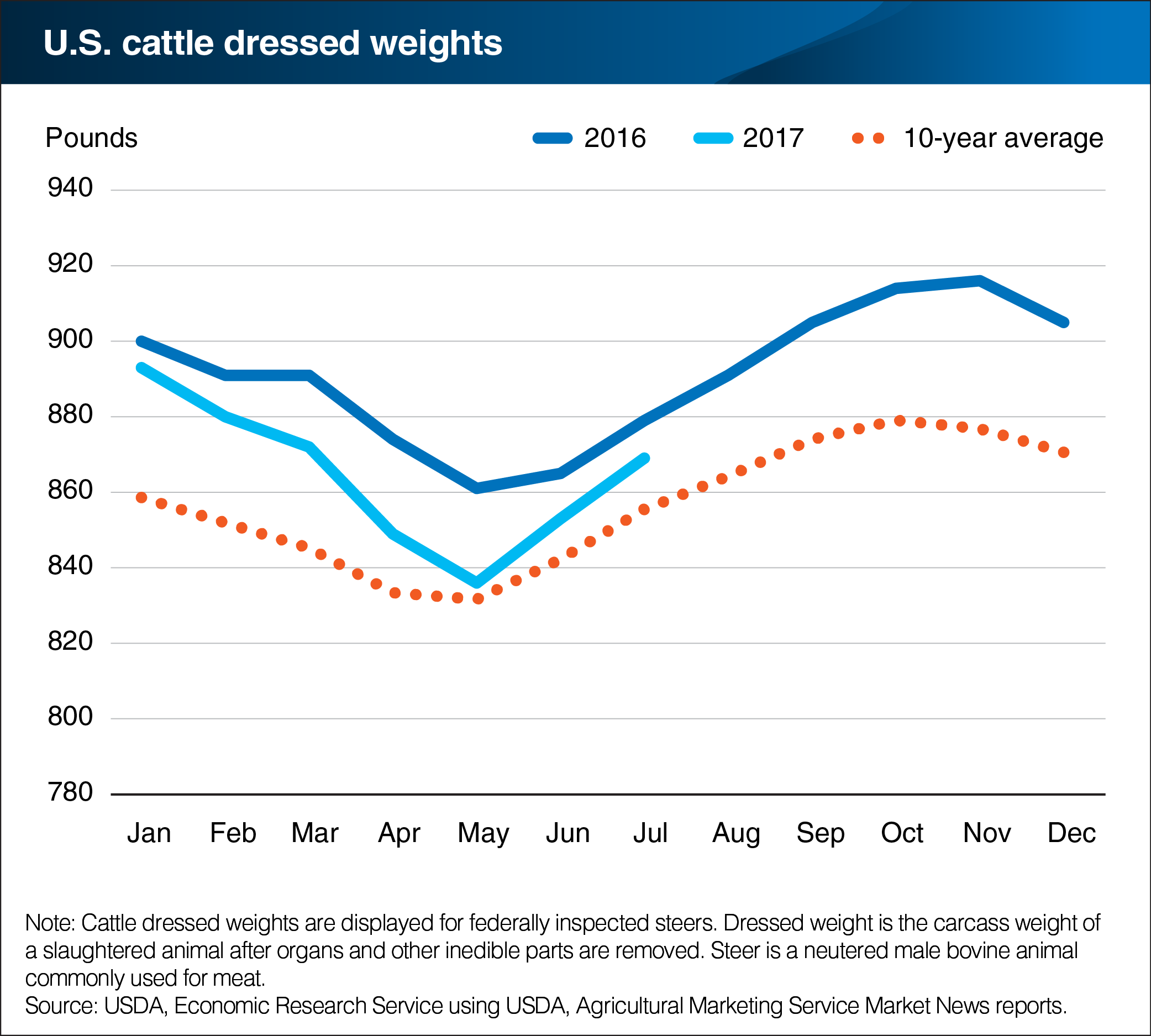U.S. cattle dressed weights are down slightly in 2017, but remain above long term averages
- by Mildred Haley
- 10/25/2017

Seasonality of steer dressed weights are largely determined by biological factors and weather-related impacts on animal growth. Seasonally, steer weights tend to increase from the spring months, then decline from late fall into the early spring months. The long-term trend, which has been marked by sustained growth in dressed weights, is due to improvements in cattle genetics through selective breeding and the implementation of modern production systems. For steers, several factors interact to influence year-over-year changes in carcass weights including: producers’ responses to market prices of outputs and inputs (feed and feeder animals); weights and age at which animals are placed into feedlots; and animals’ biological responses to abnormal weather. Steer weights in 2017 are lower than a year ago, driven by aggressive marketing of slaughter-ready animals in feedlots, especially compared to a year ago. This is due to greater profit margins for retail meat packers than in 2016. Still, steer weights remain above their 10-year average, a period in which 2011-13 corn price averaged more than 6 dollars per bushel. This chart appears in the Livestock, Dairy, and Poultry Outlook newsletter released in October 2017.


